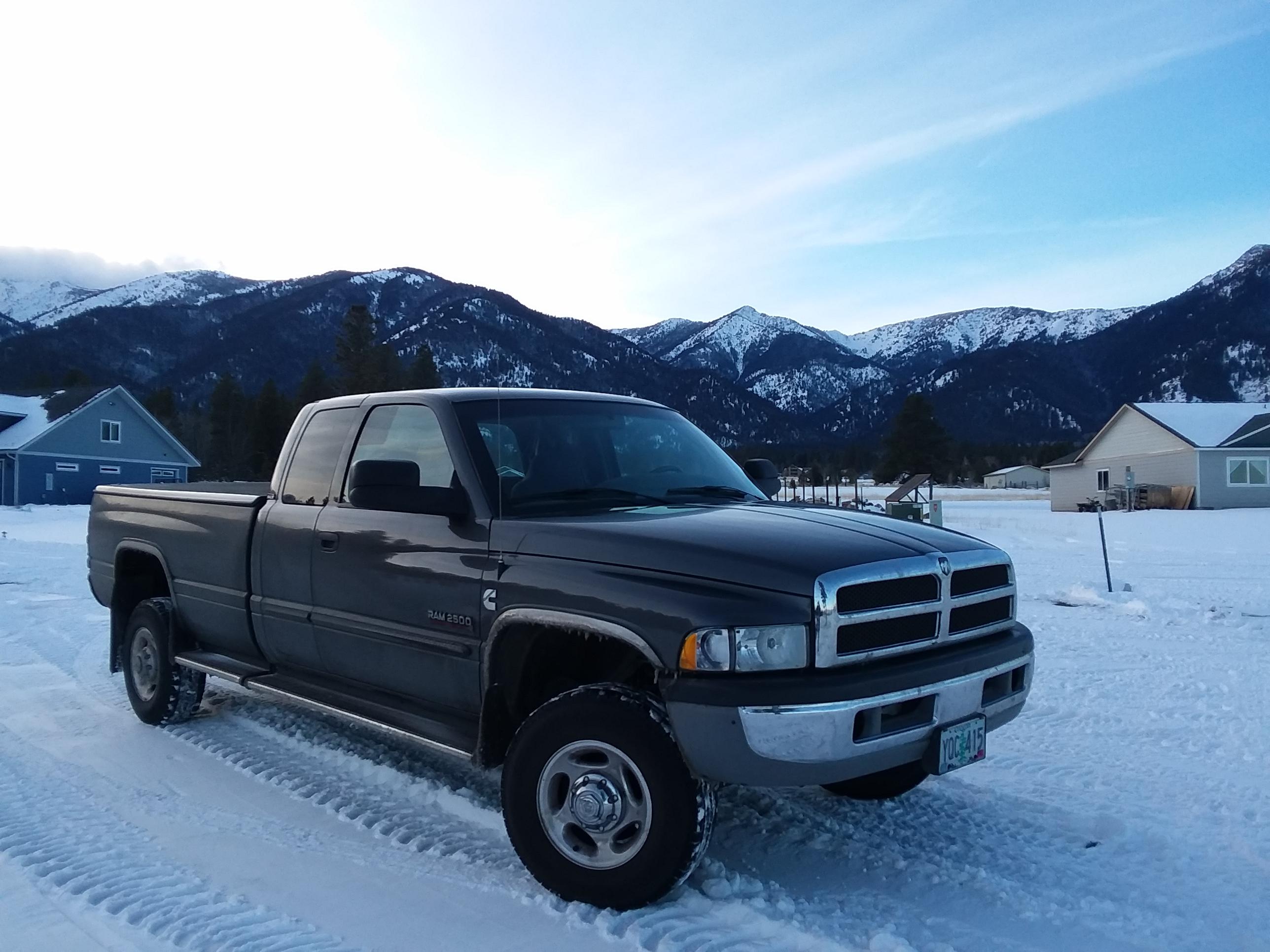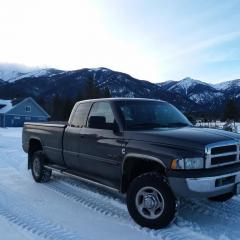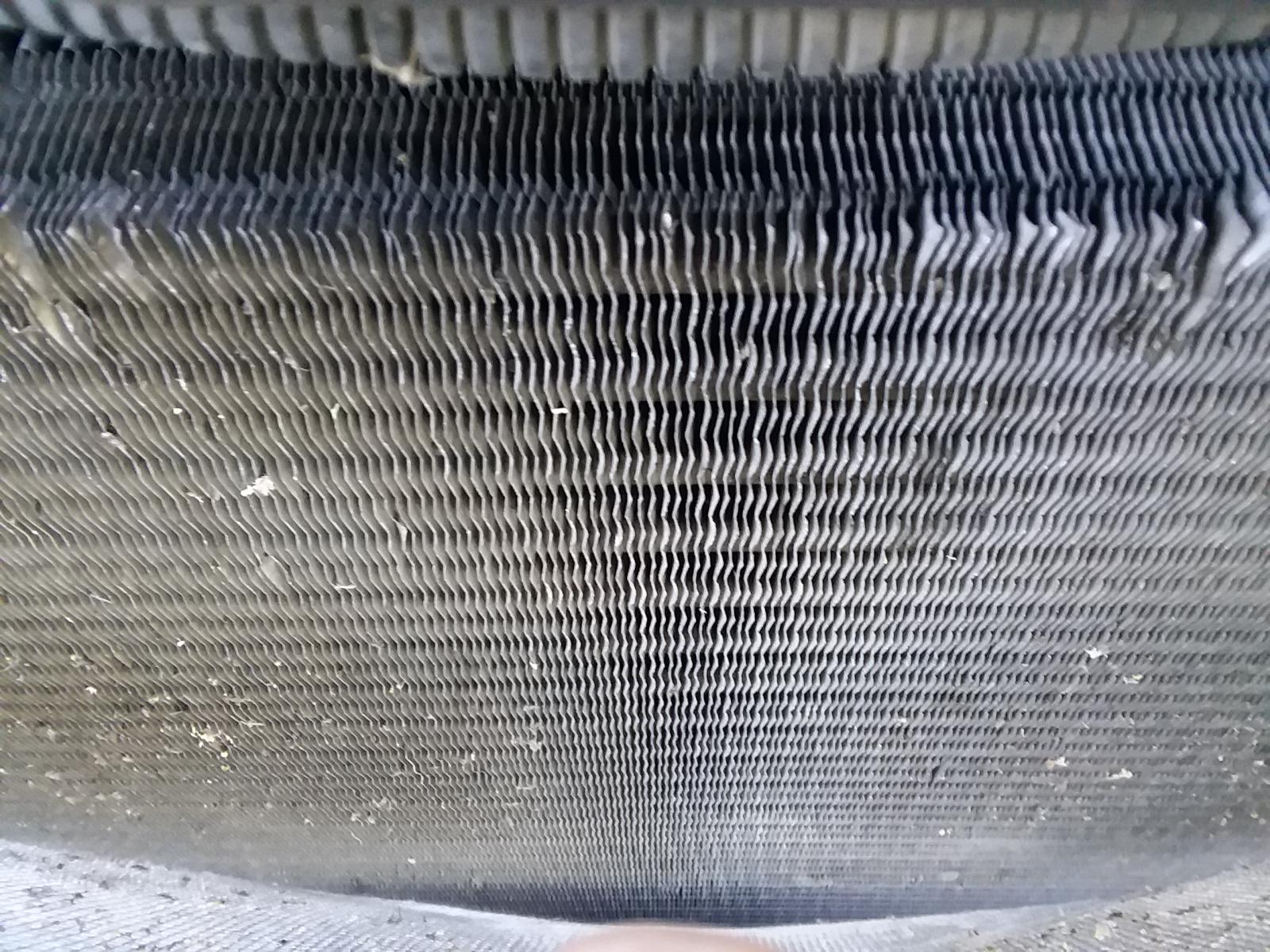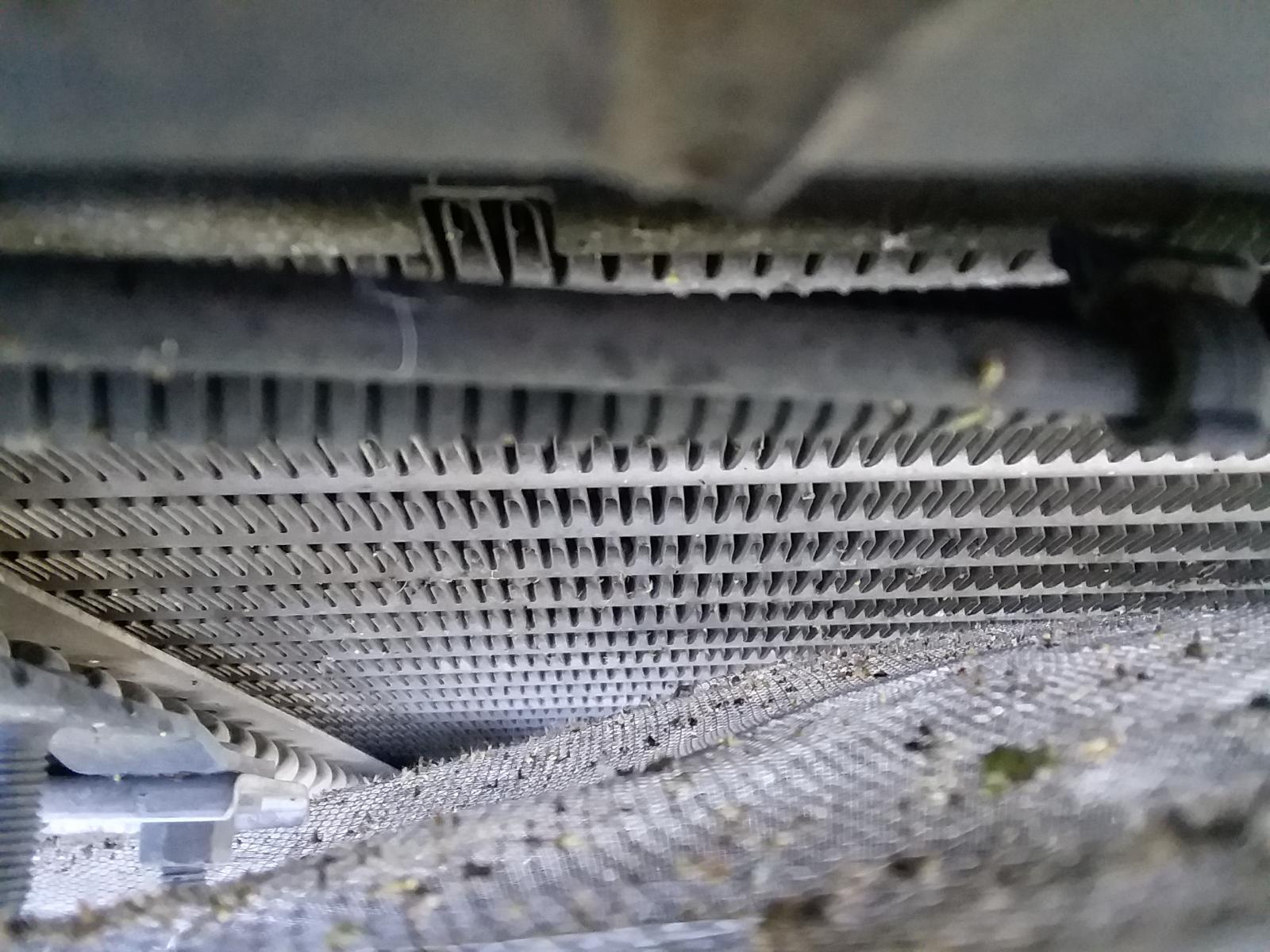
Everything posted by Tractorman
-
Gear Ratios and Transfer case failures - related/unrelated
"Trigonometry"? That's a big word. - John
-
Gear Ratios and Transfer case failures - related/unrelated
To answer your question - yes, both wheels need to be rotated or one wheel needs to be rotated two revolutions. You can also do it another way. Jack up one front wheel just off the floor. Using a marker of your choice, mark the bottom of the tire near the tread and place another mark on the floor. Have someone hold the tire in that position while you take up the slack in the front driveshaft. After taking up the slack, mark the end yoke and the pinion case for a reference point. Now rotate the drive shaft 3.55 turns and check front wheel position. If the front wheel has turned two full revolutions, then you have 3.55 gears. If not, continue rotating the driveshaft until 3.73 turn have been completed and check again. Or, 4.10 turns - you get the picture. - John
-
2nd gen PCM functions
Electrical noise can come from several sources - poor battery condition, poor electrical connections, poor grounds, a bad diode in the alternator, etc. There is also a wiring modification article (called the WT Wiring Mod) that corrects all lot of electrical problems. As I am writing this, I see that @Me78569 has posted that information. - John
-
2nd gen PCM functions
If it is only doing this in third or fourth (overdrive), it could be that the converter is unlocking and relocking - about 100 -200 rpm difference. That could feel like slipping. If this is the case, the cause could be electrical noise. - John
-
3rd or 4th gen fuel pump in 2nd gen
I don't think that there is any mystery here. To my knowledge the lift pump feeds directly into the inlet of the fixed displacement vane pump inside the VP44. The discharge flow of the vane pump is regulated at over 100 psi. The 14 psi overflow valve is one of many components is in the path of the internal vane pump discharge, consequently there is always return flow through the 14 psi overflow valve - even when there is only 5 psi lift pump pressure. - John
-
Clutch Engaged and Screeching/Screaming
@TheGreatWhite, all of what @dripleysaid is here is right on. You guys now have me concerned as I have about 47,000 miles on my new stock clutch and throw-out bearing. The original clutch lasted 297,000 miles with nothing wrong with the original throw-out bearing. I have always put the transmission in neutral with my foot off of clutch pedal at intersections. @dripley, it sounds like you had a bearing failure even though you were using the clutch properly. @TheGreatWhite, even though you may not have used the clutch as recommended, the throw-out bearing should never have failed so early. It is very disappointing to learn that the manufacturing of the throw-out bearing may have degraded to such a poor quality. - John
-
Partial dead pedal???
Just for clarification, I don't think you are experiencing a "dead pedal" (engine dropping to idle and staying there). I believe the engine is going into "limp mode" because the ECM or PCM is detecting some abnormality somewhere and therefore de-rates engine power for damage control. I know that you probably already know this, but I just wanted to clarify the terminology. Maybe your code reader is not picking up a code that could help to diagnose. I don't have much experience in this area, but others have said that different code readers can give different results. - John
-
Front brakes dragging
Thanks for the response, however I don't think I was clear about my question. What I meant was, is there any loss of braking performance with the exhaust brake being mounted farther from the engine? - John
-
Front brakes dragging
I like the idea of an in-line PRXB exhaust brake, but I wonder any performance is lost being further from the engine. Anybody know? I also have logged over 400,000 miles with the my vacuum operated direct mount PACbrake - 69,000 miles on my previous '99 truck, plus 343,000 miles on my current truck. It has been an excellent unit. - John
-
Front End and 4WD
If this is happening on asphalt or concrete, what you are talking about could be quite normal. The front axle shafts do not have constant velocity u-joints (CV joints). Consequently, when the steering is turned sharply in either direction, each tire will speed up and slow down twice in one revolution due to the steep angle of each u-joint per axle shaft. With excellent traction on asphalt or concrete, the front tires develop severe wheel hop because something has to give. And furthermore, since the transfer does not have a differential, there is also binding between front and rear axles, just not as severe. - John
-
Front brakes dragging
You may have a problem, or you may not. At this stage I would not do anything with the brakes until I could drive the truck and make a better assessment. The piston in the caliper moves very little when the brakes are applied and released. When the brake pedal is released, the piston inside the brake caliper has no reason to move away from the rotor on its own. So that means other forces have to be introduced to retract the piston slightly. One of those forces is rotor runout which will push the piston slightly back into its bore, but that means truck has to be moving down the road for that to happen. The other force is the square cut o-ring sealing the piston in the bore. When hydraulic pressure is applied, the o-ring twists slightly as the piston forces the pad against the rotor. When the hydraulic pressure is released, the square cut o-ring attempts to return to its original shape. So, between the o-ring forces and rotor runout, the piston slightly retracts and removes the force against the rotor. When you park your truck in the garage, the last thing you do is step on the brake. At this point any rotor may have a varying degree of drag, and not all rotors will have the same drag for the above stated reasons. When you can, take your truck for a test drive. Use the brakes only as much as needed. After driving for awhile, pull off the road and check the temperature of each front rotor. You can use your hand (carefully) or an infrared thermometer. If you don't feel or see a major difference in temperature, then probably all is well. If the passenger side rotor is much hotter than the driver's side, then you know you have a problem. - John
-
Bug screen behind grill/winter covers
I lived in Leadville, Colorado for 12 years - very much a winter climate as Leadville' elevation is over 10,000 ft. I made a daily roundtrip going over Fremont Pass (11,300 ft) twice a day in my '91 Ford F150 4x4 pickup powered by a Cummins 4BTA engine. I used a winter front with a zipper to control air flow. I always left it 1/3 open no matter how cold it got. I did this because I found that some air flow is always necessary so the thermostat on the viscous fan will sense the proper temperature. The small opening also maintains a more laminar air flow (much less turbulence) around the fan. On a below zero degree day I could ascend Fremont Pass with normal engine operating temperature and descend the other side with my heater still working at the bottom of the pass. The fact that they salt the roads heavily in your neck of the woods will make a difference on the material to select and the method of controlling the opening. - John
-
Bug screen behind grill/winter covers
Not "did", it still does! If you decide to install a screen, I think that you will be happy with it. I have used a plastic screen, but I found the diameter of the wire in an aluminum screen was much smaller so my thoughts are that the aluminum screen would be less restrictive when comparing the same mesh size. - John
-
Bug screen behind grill/winter covers
I have made and used a bug screen for the life of my truck - almost 19 years and 343,000 miles so far. I have found no ill side effects. I am still running the original condenser and charge air intercooler - the two components directly in the path of bugs and other debris. I use screen door material (aluminum). Most of the bugs just bounce off of the screen. The ones that stick to the screen just dry up and fall off or get cleaned off when I am driving in the rain. I rarely ever need to clean the screen. The photo below shows the typical condition of the screen. The screen has not been cleaned for well over a year. The photo below shows part of the condenser just behind the screen. Note that there is nothing lodged in the fins and that the fins are straight. The last photo below shows the charge air intercooler just behind the screen. Again, nothing lodged between the fins and the fins are straight. All the above photos were taken just a few minutes ago. You are probably wondering if I ever had any overheating problems because of the screen. The answer is no. I had about a two year period that I was experiencing the engine running hot while towing up long grades. I replaced the fan - still ran hot. I removed the screen - still ran hot. Eventually, after reading some posts regarding overheating, I removed the radiator and found the motor side of the radiator caked with grime caused by the crankcase breather. I cleaned it up and re-installed the screen and I have never had a heating problem since. I have had the truck twice in Death Valley, once with a camper (combined weight of 12,000 lbs). I pulled from the valley floor (minus 200 feet) to the pass at 5000 feet. The distance was 16.8 miles. It was late afternoon and the temperature at the start of the incline was 116 degrees and about 90 degrees at pass level. I had the air conditioner on for the whole climb. The engine did not overheat. I think that was a pretty fair test. I tow a fair amount at times - most of the time the combined weight is between 12,000 to 16,000 lbs. The screen does what I want it to do - it keeps debris from wedging between cooling fins. You will probably hear different opinions about using a screen, but for me it has proven to be worthy. - John
-
W-T ground mod
The battery temperature sensor has only one purpose. It is to sense the overall temperature of the battery under normal operating conditions. It does not monitor temperature to correct problems, nor does it fix anything. It is placed in the tray of one battery (does not matter which one) so that a stable temperature wil be recorded and be directed to the PCM. If the ambient air temperature is 100 degrees, the battery temperature will sense this and send a message to the PCM. The PCM will reduce the alternator output upper limit voltage to - say to 13.8 volts, just guessing - so that the batteries don't gas excessively and over heat. Just the opposite, if the ambient temperature was 10 degrees, then the battery temperature sensor will send a different message to the PCM. The PCM will increase the alternator output upper limit - say to 14.2 volts, again just guessing, to compensate for the cold temperature. The PCM is constantly monitoring the battery temperature sensor (and battery voltage) and continually tells the alternator what to do - so, the battery temperature sensor makes batteries last longer under all types of driving conditions and it is working all of the time. - John
-
Hard start when hot/sitting
A couple of things you could try... When parking the truck overnight, point the front end down hill. It will reduce the amount of fuel leaking back to the tank if that is the problem. It should start quickly in the morning. If most of your hard starts are after the engine has reached full operating temperature, then the pump control module on the VP44 may be on its way out. Some have tried pouring cold water on the module and if the hot module was the cause, the engine would start right up afterward. - John
-
Sport light conversion issue
I can't answer you question regarding your kit, but I have a sport headlight conversion. I made up the relay system myself. Here is the way the factory sport headlights work: The 9007 bulbs are the outer headlights. The 9004 bulbs are the inner headlights. The low beam filament on the 9004 bulb never gets used. Low Beam Function: 9007 bulb - low beam filament on, high beam filament off 9004 bulb - low beam filament off, high beam filament off High Beam Function: 9007 - low beam filament off, high beam filament on 9004 - low beam filament off, high beam filament on I set mine up this way and they work well. - John
-
Ground wire/ fuse box/ hot alternator
@Mopar1973Man, good article!
-
Ground wire/ fuse box/ hot alternator
There is little value in using an ohmmeter to check for continuity on high amperage circuits. Even if only one strand of wire in the circuit makes a connection, the ohmmeter will read zero resistance, indicating the circuit is okay. The best method for testing high amperage circuits is to perform a voltage drop test on the circuit while the circuit is under a load. - John
-
Engine surging... at a loss here
I feel your pain. At this point I would rig up a fuel line and connect one end to the suction side of the lift pump. Connect the other end to a five gallon container of fresh diesel - and see what happens. It may be informative. If the engine runs fine and the fuel pressure is stable, then you likely have a severe restriction between the lift pump and the tank. If the symptoms don't change at all, then you could have a severe restriction between the lift pump and the gauge connection. You also mentioned a "a good sized tear in the sock". You could have large items lodged anywhere in the fuel line up to the lift pump. - John
-
150amp breaker tripped again
Always a possibility, but I think unlikely. Remember that no one seems to ever had a problem with the factory 140 amp fuse and that fuse has operated under all kinds of undesirable battery conditions. - John
-
150amp breaker tripped again
Typically, the charging system has to work the hardest for a few minutes just after you start the truck. Even without grid heater operation, the starter draws a lot of power from your battery. Once you start driving, the alternator has to carry the electrical load, plus the make up load for the partly discharged batteries from starting the engine. I would check your 150 amp circuit breaker connections for building heat while the alternator is charging. A loose connection (if it is near the circuit breaker) will build heat quickly and that heat could transfer to the breaker causing it to trip. It is very easy to do a voltage drop test at those connections while the engine is running . It will clearly show whether or not the connection is good. If you need help with the voltage drop test, let me know. It could be that you just have a weak breaker. It might be worth installing another new breaker while you are diagnosing the problem. - John
-
Long Cranking Time
Glad to hear that the VP44 is fine. If you don't already know, there is an IOD fuse (ignition off draw) in the fuse panel that's visible when you open the driver's door. You can pull outward on the fuse (don't remove it) and it will disable the hood light, courtesy lights, glove box light, and parasitic draws from required computer memory for things like radio, key FOB system, central timer, etc. It would be a shame for the new batteries to have a short life because of being drained from not driving the truck. - John
-
Long Cranking Time
So, if I am understanding correctly, the VP44 is running fine? Engine always starts quickly and performs like it should in all driving conditions? Just wanting to clarify that the solution to your problem was just new batteries and a new starter. - John
-
Engine surging... at a loss here
@jimbochilds, I just edited my last response and replaced the photo with an electrical diagram showing the wire that you were working with (I think). - John







